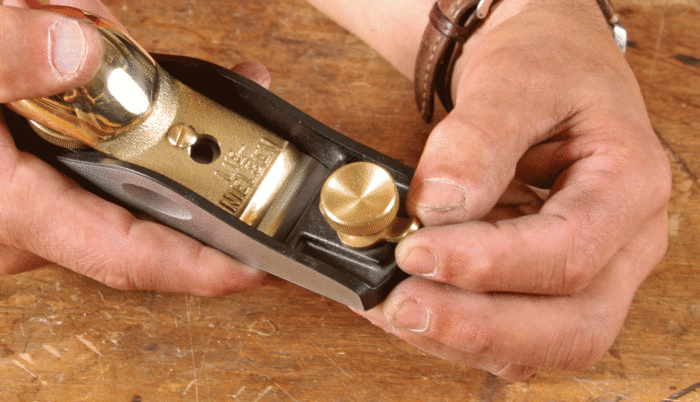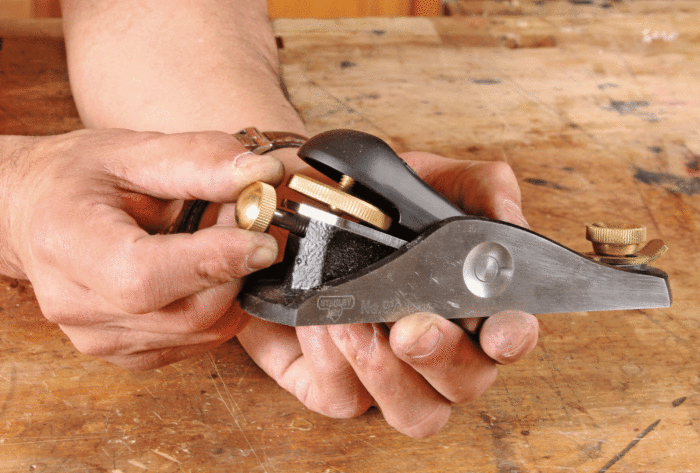What to Look for in a Block Plane
A block plane is a tool that you'll use daily in the shop. Here's some advice on buying one for the long haul.

I’d be lost without my block plane. Though small, this tool has a big place in my woodworking, and I use it at least a dozen times each day when I’m in the shop. I trust it to bestow the critical finishing touches on a project, like carefully fitting a drawer into a carcase. The plane’s small size makes it easy to control on an assembled piece, say for chamfering a table edge, and well-suited for jobs like removing machine marks from the edges and ends of a board, planing curved edges, and trimming joinery flush.
Because a block plane gets so much use, it’s important that you get a very good one, one that fits your hand, cuts well, and adjusts easily. Choose wisely and you’ll have a trusted friend for life. Choose poorly, and you’ll kick yourself many times over.
What’s important in any block plane
You want the tool to be comfortable to hold, well-machined, and free of defects, such as burrs and rough spots. When it comes to weight and mass, it’s a tough balancing act. A heavier block plane will work better when using the full width of the blade, or planing end grain, because the weight and mass help increase inertia and lessen the force needed to keep the tool moving. But for most jobs a block plane is meant to perform, like chamfering, weight is less of an issue. I recommend a two-handed grip when possible, but for those other times, a compact, well-balanced model will be easier to control.
Because these tools lack a chipbreaker, a thicker blade is paramount, as it will dampen vibration and chatter, providing a smoother cut. The blade also should be well-prepped from the factory, with a flat back and a square tip, ground to the proper bevel. You’ll need to hone the edge for true sharpness, but you shouldn’t have to do a whole lot more than that.
Blade adjustments also should be easy and smooth, and they must hold during use. You’ll also want the blade to be relatively easy to remove and replace for sharpening.
Adjustable Mouths

Though not necessary, an adjustable mouth is a helpful feature, allowing you to increase the opening (to about 1⁄16 in.) for coarse work or close it (from about 1⁄64 in. to 1⁄32 in.) to eliminate tearout on tricky grain.
Block plane blade adjusters

DEPTH BUT NOT LATERAL.
Some planes feature a threaded depth adjuster but require manual side- to-side adjustments.

SEPARATE AFFAIRS. On some models, adjustments are made two
ways: A lever for lateral moves, a threaded knob for depth adjustments.

BEST OF BOTH WORLDS. A Norris-style adjuster combines both lateral and depth adjustments and adds precision to both.
The argument for a higher angle
There’s been a long-running debate about whether you need both a standard-angle block plane and a low-angle model. Standard-angle planes, which generally have the blade bedded around 20° for a 45° cutting angle, should be better at planing boards with difficult or changing grain. Low-angle planes, on the other hand, have the blade bedded around 12°, resulting in a cutting angle of 37°. They’re supposed to better handle end grain, where the lower angle will slice the vertical wood fibers more easily, leaving a smooth and clean surface with less effort and less wear on the blade’s edge.
If you are buying your first block plane, or have the budget for only one, I recommend a low-angle model. I think the blade is better supported, more stable, and less prone to chatter or balking. This model will handle almost any job you throw its way, and if you encounter trouble, say if you’re planing some tricky long grain, you can resharpen the blade, take a lighter cut with a tighter mouth, and get great results.
Is bigger better? Not usually
Most of the time, a block plane is used on small, narrow surfaces, such as when you’re trimming dovetails flush or chamfering, where a small, agile tool has an advantage. Occasionally, when using the entire blade, as when planing a broad edge, you will be helped by the additional width and increased weight of a bigger model.

Handplane Fundamentals: The Block Plane
How to tune up your block plane
Whether your block plane is new or vintage, follow these steps to get it running at full capacity.
How to round over an edge with a block plane
Fine Woodworking Recommended Products

Suizan Japanese Pull Saw

Veritas Precision Square

Starrett 4" Double Square








Log in or create an account to post a comment.
Sign up Log in